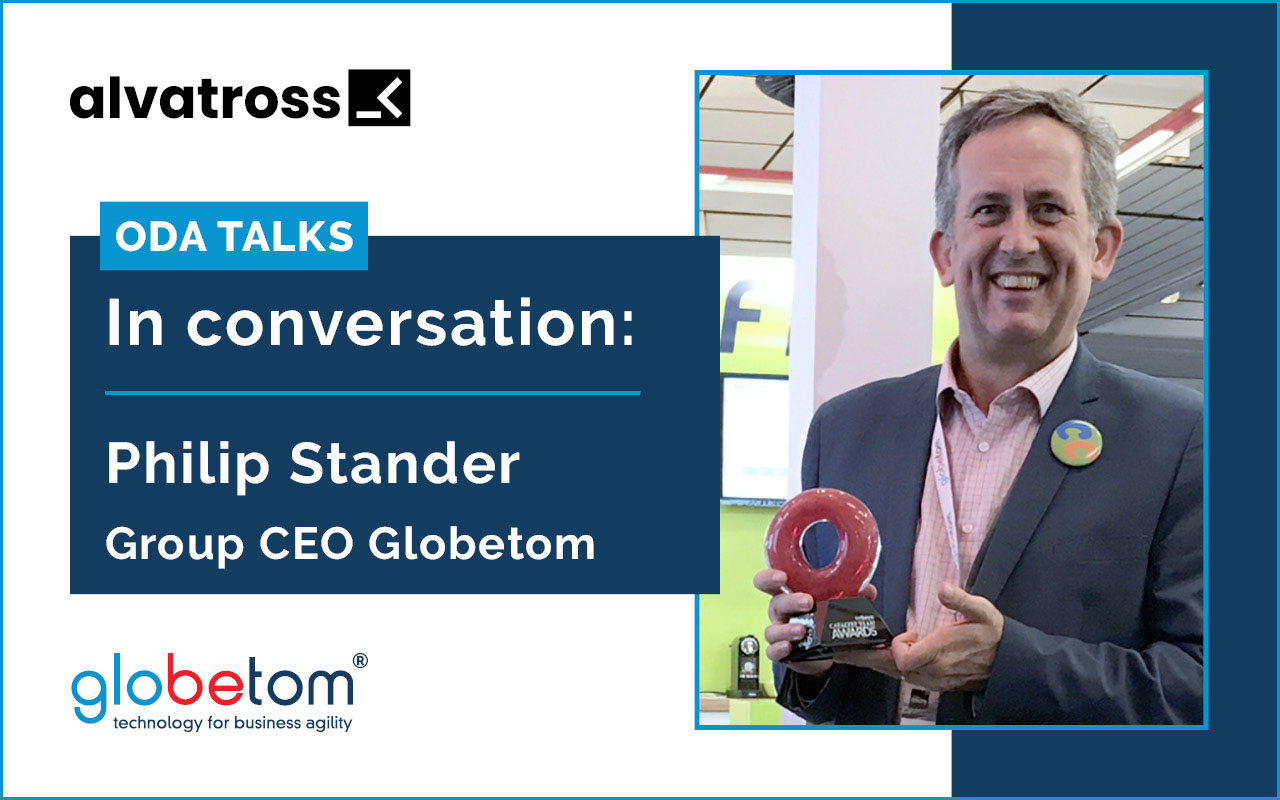
ODA Talks: The ODA’s role in ongoing and future projects
Alvatross in conversation with Philip Stander on the ODA’s role in ongoing and future projects
Originally published on www.alvatross.io
From your point of view, can you explain how the ODA has influenced the telecommunications industry? And what are the advantages it brings to companies like Globetom?
The TM Forum has carved out a pragmatic reference architecture with the ODA and Functional Framework mapping that is understandable by traditional CSP sand provides a clear technology transformation journey from a Telco to a TechCo.
Globetom applies the Amazon Working Backwards methodology for Digital Transformation projects in which we start with the Press Release, anticipated FAQs and a single page Business Canvas and we add a Technology Canvas. The Technology Canvas uses the TM Forum ODA to map the technology support for the business ecosystem by clearly showing the Engagement, Party, Core Commerce, Production and Intelligence Management requirements to support a new digital business models.
It has become a language we speak and this language mirroring when engaging with customers creates common ground based on industry standards. The ODA component architecture further provides a clear transformation journey to assist Telco’s to transformfrom traditional monolithic BSS/OSS environments to become a composable Digital Enterprise or TechCo.
As we embark on the project to renovate Telecom Namibia’s BSS/OSS, how do you see the ODA playing a role in driving digital transformation for Telecom Namibia?
The ODA’s foundational underpinning is a clear abstraction between interface and implementation achieved with the portfolio of 60+ Open API standards. In addition, the ODA reference architecture and associated component mapping provides clear guidelines for repositioning and refactoring their existing OSS and BSS assets for reuse in new Digital Business Models. With the implementation of Open API standards as part of this landmark project, Telecom Namibia will be taking the first and most important step towards an open ecosystem to enable new business models to reuse existing infrastructure.
A concrete example is the use of Globetom’s modern Rating and Charging engine that supports different business models. Revenue Weaver supports the TMF635 Usage Management API, and Digital Ecosystem business models can consume this API to record digital service usages while the underpinning Rating Engine and Account Balance Management functions are the same than those used for traditional Telco Diameter-based event and session-based charging.
We think collaboration is key in driving the industry forward. How do you envision the joint approach between our companies in leveraging the ODA framework to achieve Telecom Namibia’s goals?
I have always loved that fact that the TM Forum members and contributors form a nucleus of Telecoms Industry professionals who reinvest knowledge and experience gained to form new standards for the improvement of this industry overall.
The Satec Group and Globetom are two such organisations with years of collaborative investment inthe TM Forum. Collaboration therefore comes naturally for us. As our collaboration approach is founded in our TM Forum membership, Open API standards and the ODA as a firm reference architecture, the output of the Telecom Namibia project is much more than just traditional Telco BSS/OSS stack modernisation. The multi-party suppliers are focused on creating an environment in which future digital business models can be supported with the same technology stack.
The ODA promotes agility, interoperability, the use of standardized APIs and data models. How do you foresee this standardization impacting the integration and interoperability between Telecom Namibia’s existing systems and the new ODA-based architecture?
Telecom Namibia’s investment in the ODA and associated standard APIs from the TM Forum immediately warrants a future-proof architecture in which systems can integrate with industry standard interfaces. These APIs that can predominantly be positioned as System layer APIs immediately help to provide agile access to monolithic systems that were historically difficult to integrate with.
This unlocks the ability to readily add Process Layer APIs to build new process patterns using existing system assets for differentiation. On top of that, API-first approaches can be used to build experience layer APIs to unlock innovation. Therefore, these Systems of Record, Systems of Differentiation and Systems of Innovation/Experience with their associated APIs, and their underpinning TM Forum API standard, accelerate innovation in Telcos and help to ensure a stable ecosystem despite BSS/OSS supplier changes over time.
Looking towards the future, how do you envision the ODA evolving? And what will be the role of Globetom in that future?
The ODA will continue to evolve in terms of maturity of component and functional mapping and more and more vendors will supply out-of-the-box component implementations using the ODA component reference architecture.
This, in turn, means that telcos can more readily become part of the global mainstream move of all industry enterprises towards component-based architectures and the eventual death of monolithic application purchases. Standardised APIs across component vendors will eventually result in Telcos being able to switch component vendors with ease, based on component capabilities, quality of service, among other factors.
This evolution is foundational for successful Telco to TechCo transformation. Globetom isuniquely positioned with its portfolio of 55 certified TM Forum Open API implementations ready for agile integration into Telco and TechCo ecosystems thanks to our Orcha iPaaS Digital Integration Hub underpinning each API. Globetom will build out its APIs into Pre-packaged Integration Processes components (PIPs in the iPaaS world) to provide differentiated components that are integration ready.
About Globetom
Globetom provides organisations with agility and speed to market at scale using our cloud- and integration-ready platforms and market solutions.
Our highly scalable platforms enable API-first and integration-ready solutions as a foundation for Digital Transformation. Our technologies are engineered to readily integrate and reuse on-premise and cloud services to create differentiating solutions.
Globetom’s market leadership in implementing Open API standards is Diamond certified by the TM Forum. Our customers have the assurance of standards-based, industry best-practice integration by adopting these API standards in telecommunications and digital markets.
Established in 2002, Globetom has developed specialised platforms for the global telecommunications, aviation and digital markets since its inception.